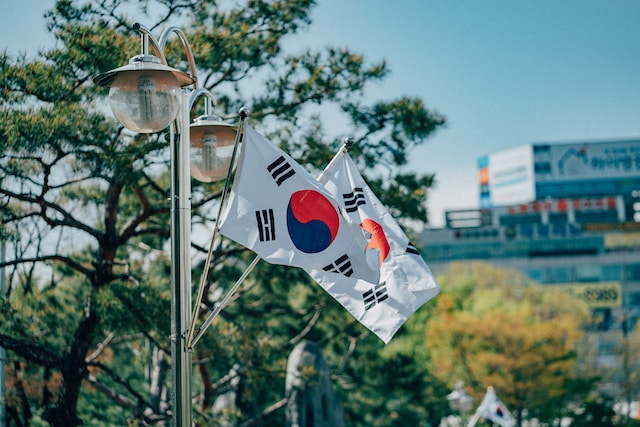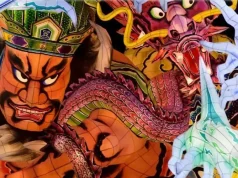Are you planning a trip to South Korea? Whether it’s your first time or you’re returning for an encore vacation, we have some insider tips that will help make your travels smoother and more enjoyable. From shopping in vibrant markets to experiencing unique cultural festivals, there’s no denying the attractions South Korea has to offer. It can be a little daunting if you haven’t been before, so allow us to guide you through an unforgettable experience with our top hacks for exploring this jovial nation!

Transportation Hacks
South Korea’s public transportation is efficient, clean, and punctual, making it easy for visitors to navigate around. Whether you’re exploring the bustling streets of Seoul or venturing into the countryside, the various public transport systems will get you where you need to go. A popular option is to travel on the KTX fast train, which can take you from Seoul to Busan in less than 3 hours. For those who’d rather explore independently, car rental services are readily available and provide an ideal way to drive along the picturesque countryside roads. Alternatively, there are also plenty of bus routes connecting major cities throughout South Korea that offer affordable fares and comfortable journeys.
Cultural Etiquette
Understanding and respecting the local customs and etiquette is an integral part of fully immersing yourself in South Korean culture, and goes a long way in enhancing your travel experience. Koreans place a high value on respect, particularly towards elders, which is evident in various social interactions. For instance, when receiving or giving items, it is customary to use two hands as a sign of respect.
Another unique aspect of Korean culture is the etiquette around meals. It is traditional for the eldest person to begin eating first, and a polite gesture to offer to pour drinks for others before filling your glass. Don’t shy away from using local greetings, such as ‘Annyeonghaseyo’ (hello) and ‘Gamsahabnida’ (thank you), as they are appreciated and often reciprocated with a warm smile. While exploring the myriad of cultural experiences South Korea has to offer, always remember to be respectful and open-minded, as this will undoubtedly enrich your journey through this captivating country.
Language Basics
South Korea is a friendly and welcoming country and knowing a few basic Korean phrases can open doors to a richer, more authentic experience. While many people in urban areas speak English, there is much to be gained from knowing some of the local language. To assist you, we’ve crafted a list of key Korean phrases and expressions that you might find useful during your stay.
- Hello / Good Morning / Good Afternoon / Good Evening – Annyeonghaseyo (안녕하세요)
- Thank you – Gamsahabnida (감사합니다)
- Yes / No – Ne (네) / Aniyo (아니요)
- Excuse me – Sillyehabnida (실례합니다)
- Sorry – Mianhabnida (미안합니다)
- I don’t understand – Molla (몰라)
- Where is the bathroom? – Hwajangsil eodiyeoyo? (화장실 어디에요?)
- How much? – Eolmayeyo? (얼마에요?)
- I would like to order – Jumun halkkeoimnida (주문 할게요)
The locals will appreciate your efforts to speak their language, and you may find that these phrases help you to connect more deeply with the culture and people of your destination.
Authentic Cuisine
The diverse and flavorful world of Korean cuisine is an adventure in itself. With an array of dishes made from fresh, wholesome ingredients, there’s a delicious discovery for every palate. If you’re unfamiliar with Korean food terminology, navigating menus can be a bit of a challenge, but don’t worry, we’ve got you covered.
Be sure to sample the iconic dish, ‘Kimchi’, a fermented, spicy cabbage that is served as a side dish with almost every meal. ‘Bibimbap’, a mixed rice dish with vegetables, meat, and a raw or fried egg, is a must-try. If you’re a fan of BBQ, then ‘Samgyeopsal’, or grilled pork belly, is a delight to savor. And don’t forget to try ‘Bulgogi’, a marinated, grilled beef dish that is a crowd-pleaser.
For those with a penchant for spicy food, ‘Dakgalbi’, a spicy stir-fried chicken dish, or ‘Tteokbokki’, rice cakes in a spicy sauce, might be right up your alley. If you prefer soups or stews, you can’t go wrong with ‘Doenjang Jjigae’, a hearty soybean paste stew, or ‘Gomtang’, a rich and flavorful beef bone soup.

Off-the-Beaten-Path
In addition to its well-known attractions, South Korea is home to countless hidden gems that offer a more intimate and unique view of the country’s beautiful landscapes and rich history. For a refreshing break from the bustling city life, consider embarking on a hike up Bukhansan National Park, home to more than 1,300 species of plants and animals and stunning panoramic views. Travel further to Gangwon-do, a tranquil province famous for its majestic mountains and pristine beaches, a perfect location for those seeking solitude and tranquility.
For cultural immersion, visit the ancient city of Gyeongju, also known as “the museum without walls”. This UNESCO World Heritage site is filled with ancient temples, royal tombs, and archaeological sites. Another charming destination is the Jeonju Hanok Village, where visitors can experience traditional Korean life by staying in a Hanok (Korean traditional house) and trying on a Hanbok (traditional Korean outfit).
To satisfy your culinary cravings, visit the Jagalchi Fish Market in Busan, where you can savor fresh seafood, or venture to the Chuncheon Dakgalbi Street to enjoy the city’s famous spicy chicken dish. For art lovers, the Heyri Art Valley offers an inspiring collection of galleries, bookshops, and cafes set in a tranquil natural environment.
Festivals and Events
South Korea is a country rich in traditions and cultural festivities. Timing your visit to coincide with these events can add an extra layer of excitement and cultural immersion to your trip. The ‘Seollal’ or Lunar New Year, usually celebrated in January or February, is one of the most significant traditional Korean holidays. It’s marked by family gatherings, ancestral rites, and the enjoyment of traditional games and foods.
The ‘Jinju Lantern Festival’, held in October, is another must-see event. The city of Jinju comes alive with vibrant lantern displays, live performances, and floating lantern parades on the Nam River.
For cherry blossom enthusiasts, the ‘Jinhae Gunhangje Festival’ in April offers stunning views of blossoming trees, military parades, and a variety of cultural performances. And if you’re visiting in May, don’t miss the ‘Buddha’s Birthday’ celebrations, where temples are adorned with colorful lanterns, and streets come alive with parades and traditional music.
Autumn brings the ‘Andong Mask Dance Festival’, a unique event showcasing the rich heritage of Korean mask dances, and the ‘Seoul International Fireworks Festival’, illuminating the city’s night sky with a spectacular display of colors. Irrespective of the time of year, South Korea offers a myriad of cultural experiences to enrich your journey.
In conclusion, South Korea is an incredibly diverse country with something to offer any traveler. We hope that these insider tips help you make the most of your journey and enjoy a memorable and immersive experience in this captivating land.





